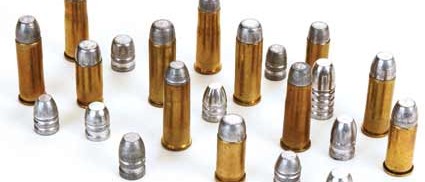American hunters love bullets, and for good reason. Ultimately, it’s the bullet that is responsible for making the kill. Jacketed bullets were the thing in the 1880s, and the ability to expand or mushroom the bullet was developed in the 1890s. Velocities increased to the 3000 f.p.s mark by 1910 and expanding bullets really upped the ante between WWI and WWII. So many bullets have come out ever since, and it’s impossible to claim that you’re entirely aware of everything that’s available.

The Underlying Principles
The basic principles used to make frangible projectiles haven’t changed for more than a century. Two underlying principles you need to be aware of are that velocity has always been against bullet performance and bullet expansion causes greater resistance, decreasing the chances of a successful penetration. Varmint bullets often come apart upon impact and this is great for non-edible pests because it reduces the chances of a ricochet. However, you need a bullet that stays put when dealing with big game. Some prefer complete penetration, stating that exit wounds make it easy to follow the animal. Others want their bullets to stay within the animal, making sure that the energy isn’t wasted on trees and rocks. And both choices deserve equal merit. The third thing that you need to understand is that bullet weight can actually help cover up flaws in bullet perfmance.
The Bullet Shape
Bullets tended to be round or flat-pointed when the tubular magazine lever action was popular. However, modern day frangible bullets rely on sharp points to retain better velocity. However, increased velocity isn’t usually a thing for many. Take the case of a deer hunter. One would always prefer a blunt-nosed bullet knowing all too well that it tends to deliver a far better impact.
The Tipped Bullet
Tipped bullets were introduced in the eighties with Nosler’s Ballistic Tip. The tip is driven into the bullet upon impact, allowing for quick expansion. However, the absence of design features often meant that the bullet wasn’t the most beautiful thing to look at once recovered. Many preferred the Bronze Point, but most would agree that it expanded way too quickly. These frangible bullets are great for mid-sized game, but one would always prefer a tougher companion while hunting larger game.
The Bonded Bullet
The Bitterroot Bullet of the 60s was the first chemically bonded bullet, a bullet that uses chemical bonding in its core for excellent expansion without having to suffer from weight loss. These bullets may not offer the most penetrating designs, but they retain most of their weight while penetrating the body to offer a decent combination of penetration and expansion. However, bonded bullets aren’t always the most accurate choice and their complex design often makes them more expensive as well.

The Homogenous Bullet
The Barnes X was the first bullet made without a lead core. These lead free bullets have polymer tips and they tend to expand due to their skived noses. Expansion in such bullets is usually limited and the bullet can only shed off its weight by shearing off its petals.
Today, manufacturers are concentrating on frangible bullets that offer greater reliability and better aerodynamics across the velocity spectrum. Bullets like the Browning BXR Deer Centerfire Rifle Ammo present rapid expansion ballistic tips that offer a decent balance between design features and expansion. ELD-X is another popular hunting bullet that offers consistent expansion from up close to a distance of roughly 300 yards.






0 comments:
Post a Comment